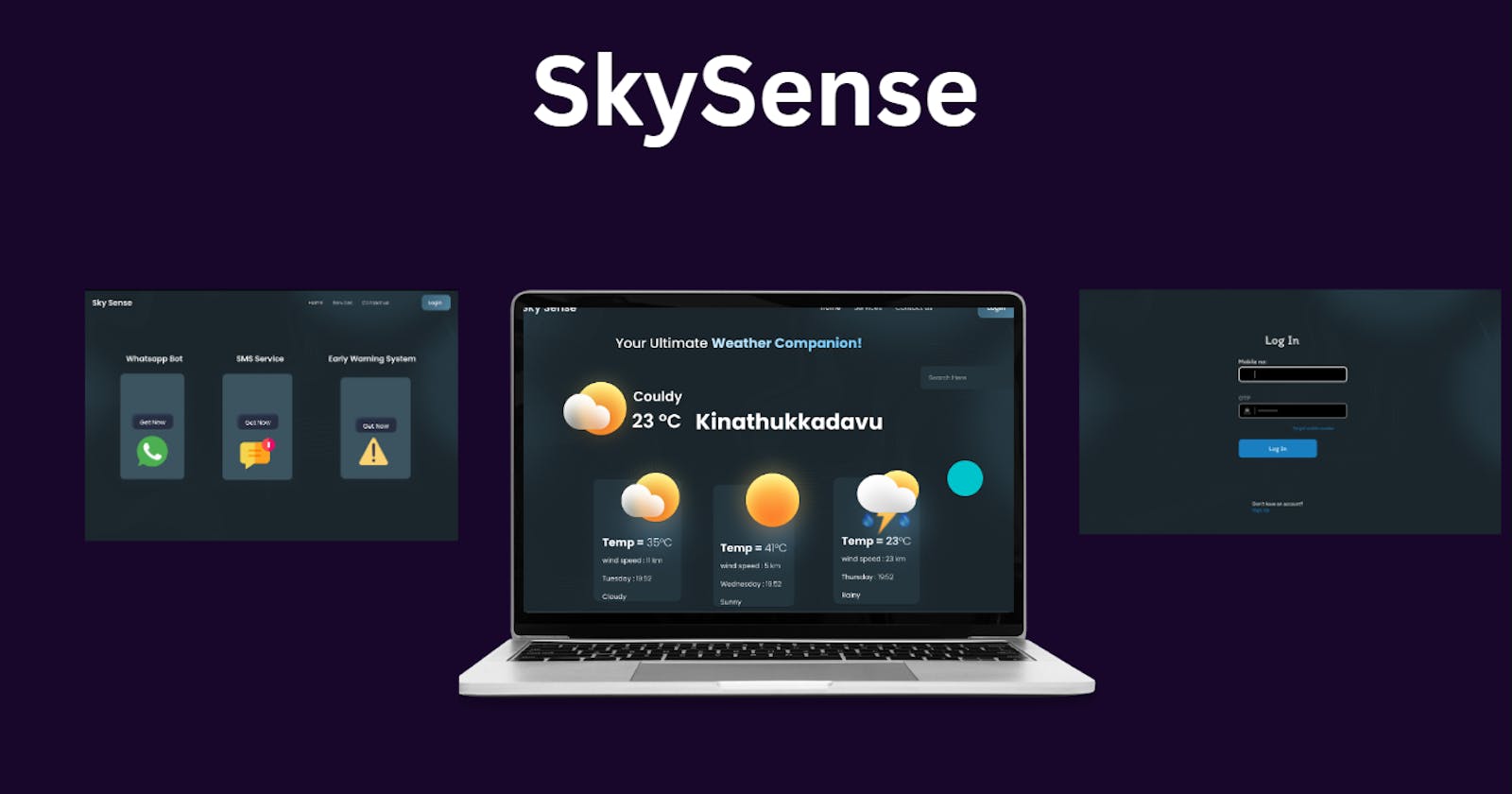About Us:
We are a team of four students from Sri Eshwar College of Engineering. We have decided to work on a project for the project expo that aims to solve a real issue. This project gave birth to SkySense. We have improved upon your idea at every stage and made it possible to address the problems faced by both the public and weather officials in weather broadcasting.
Stages of our project:
Stage 1:
The Thunder Saviour. The idea is to alert people about the hazardous thunder events that cause lots of lives and money. This can help people to be cautious about approaching thunderstorms. The issues that we faced are a lack of datasets, less accuracy of the predicting models, and unpredictability of the weather. Also, we found that predicting other weather hazards like heavy rainfall, snowfall and tornado can be useful to the public. So we decided to create a Brandnew Weather companion app named "Sky Sense"
Stage 2:
The SkySense according to us is a trustable weather platform to bridge the gap between forecasting and broadcasting.
At this stage, we were searching for datasets and APIs to provide us with accurate weather data. Since IoT devices alone were not sufficient for predicting weather in advance, it was crucial to rely on a trustworthy weather source. We discovered reliable APIs such as OpenWeatherMap and AccuWeather for weather prediction. Furthermore, we obtained forecasting information from the IMD website by utilizing web scraping techniques. To validate this information, we decided to develop a historical weather prediction model. This approach led us to the conclusion of creating an Integrated API + Historical Weather Prediction Model, ensuring a reliable and comprehensive solution.
Overall workflow:
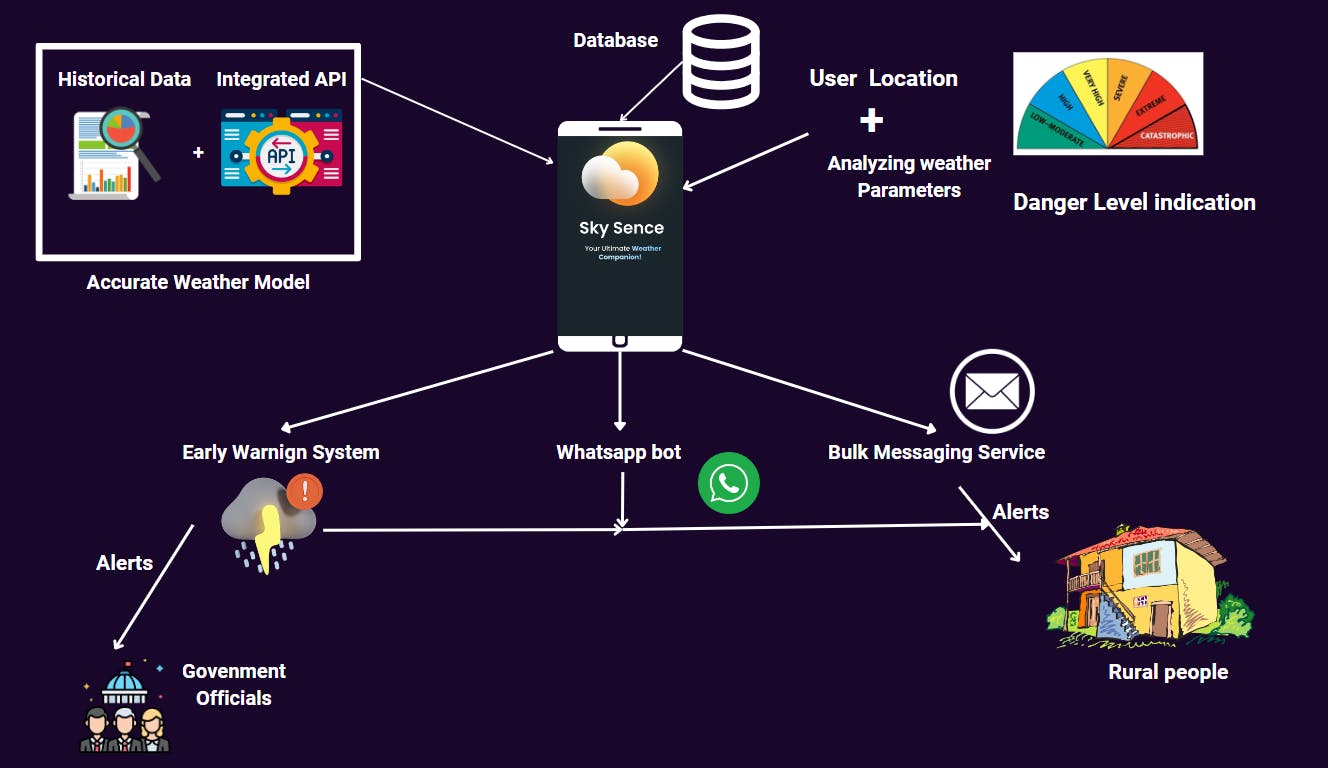
Weather prediction and analysis:

For the prediction of the weather condition, we have implemented the ANN and back-propagation algorithm which is trained on the dataset taken from NASA's Power Larc API (2010 - 2023). And we have obtained an accuracy of 99%, which is Amazing.
Colab file link --> https://colab.research.google.com/drive/1jg5fVXGS9_DJHPsCP4ndwYt2iV4pOa4g#scrollTo=pARr2rWH7dWv
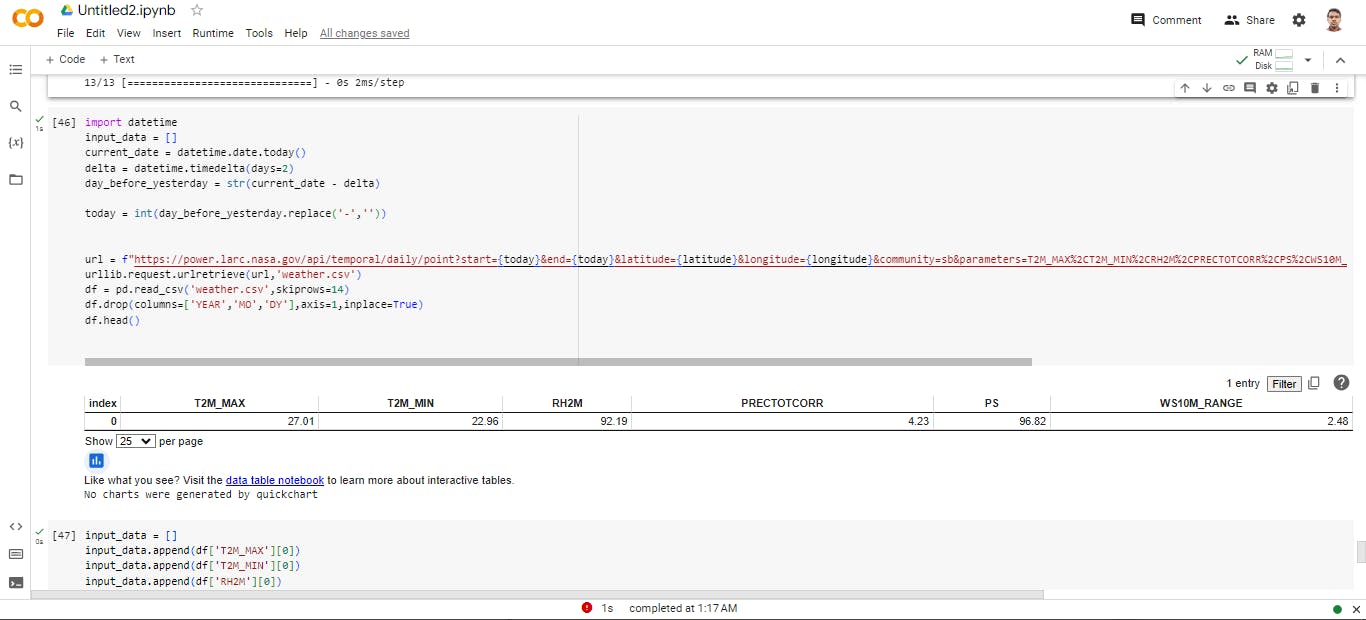
Forecasting tomorrow's weather
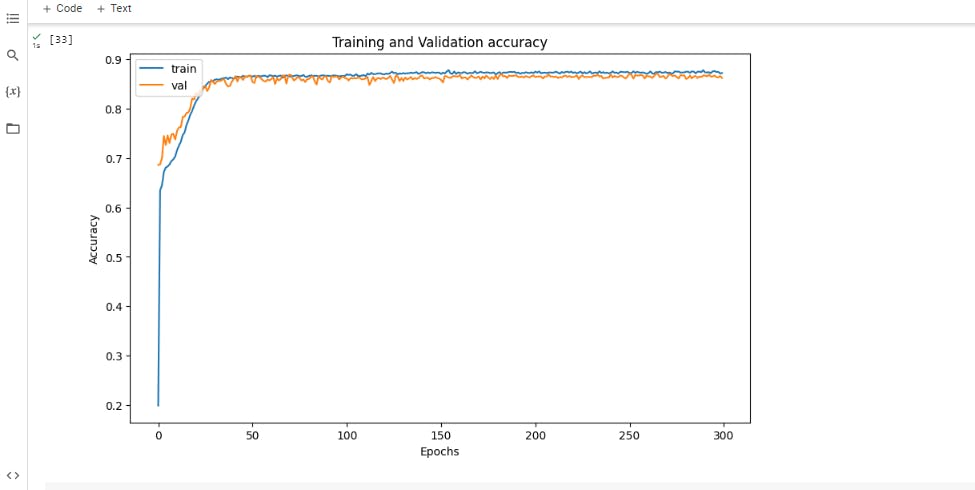
Accuracy graph

Accuracy = 99.60%
Creating a Skysense account:

Our Database View:
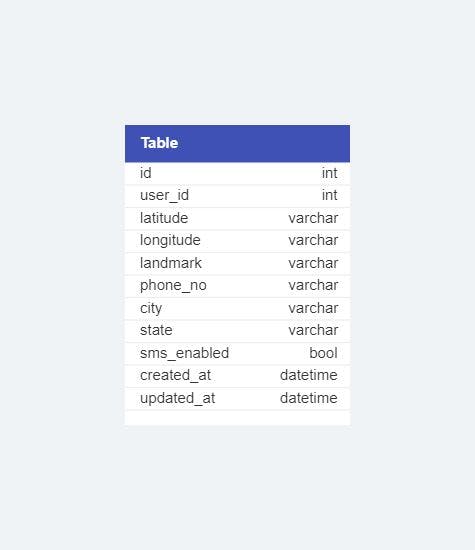
Next in-order to broadcast this weather information to every person we decided to implement whatsapp and sms broadcasting also we had plans to include radio broadcasting to reach people in the remote areas in the future.
Services that Skysense provide:
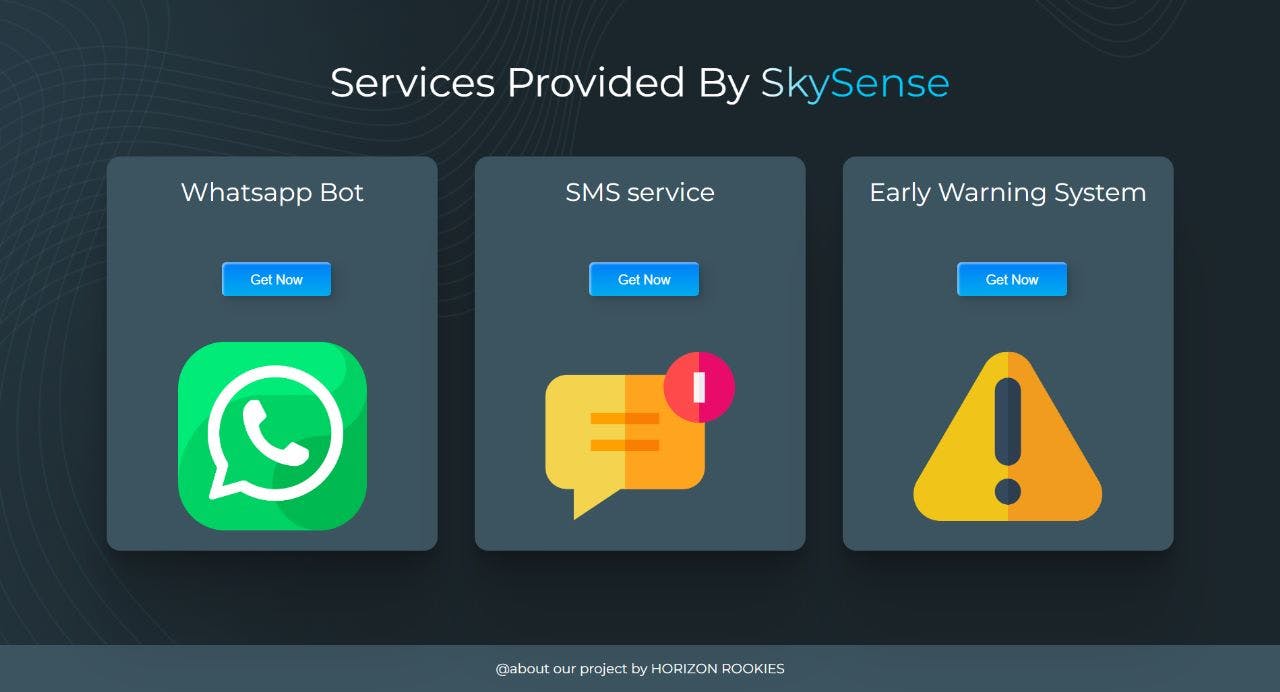
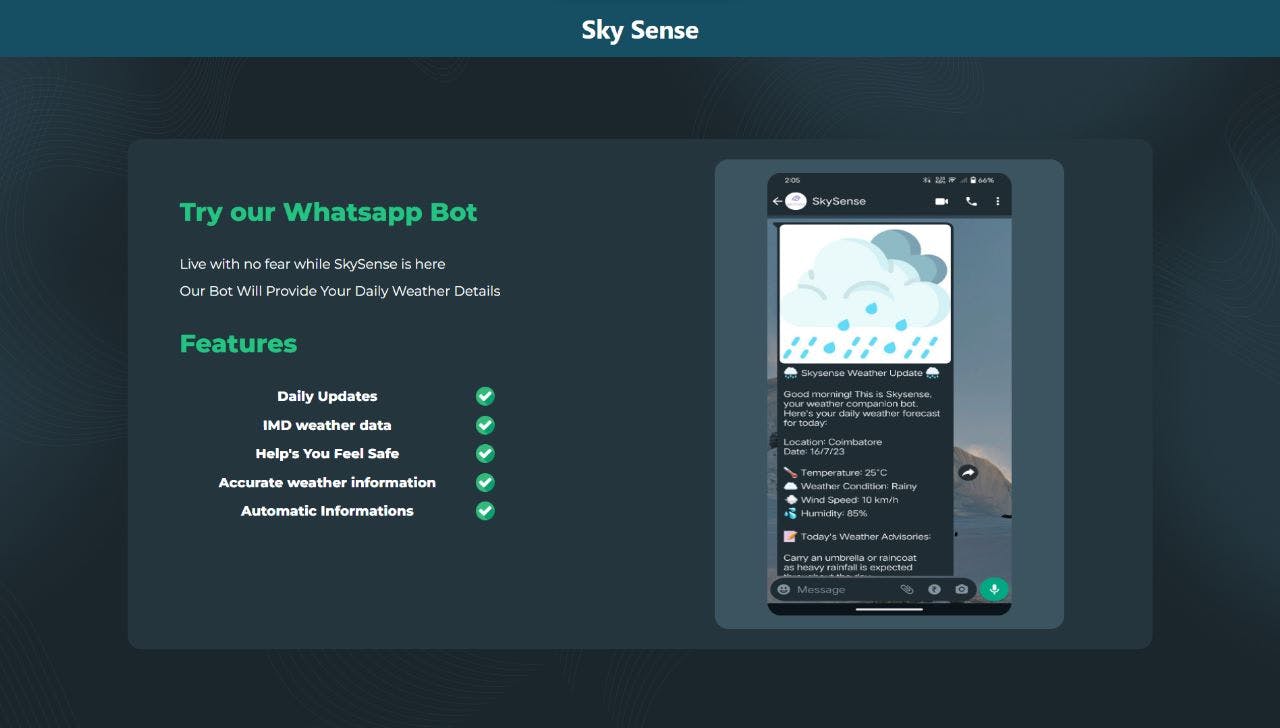
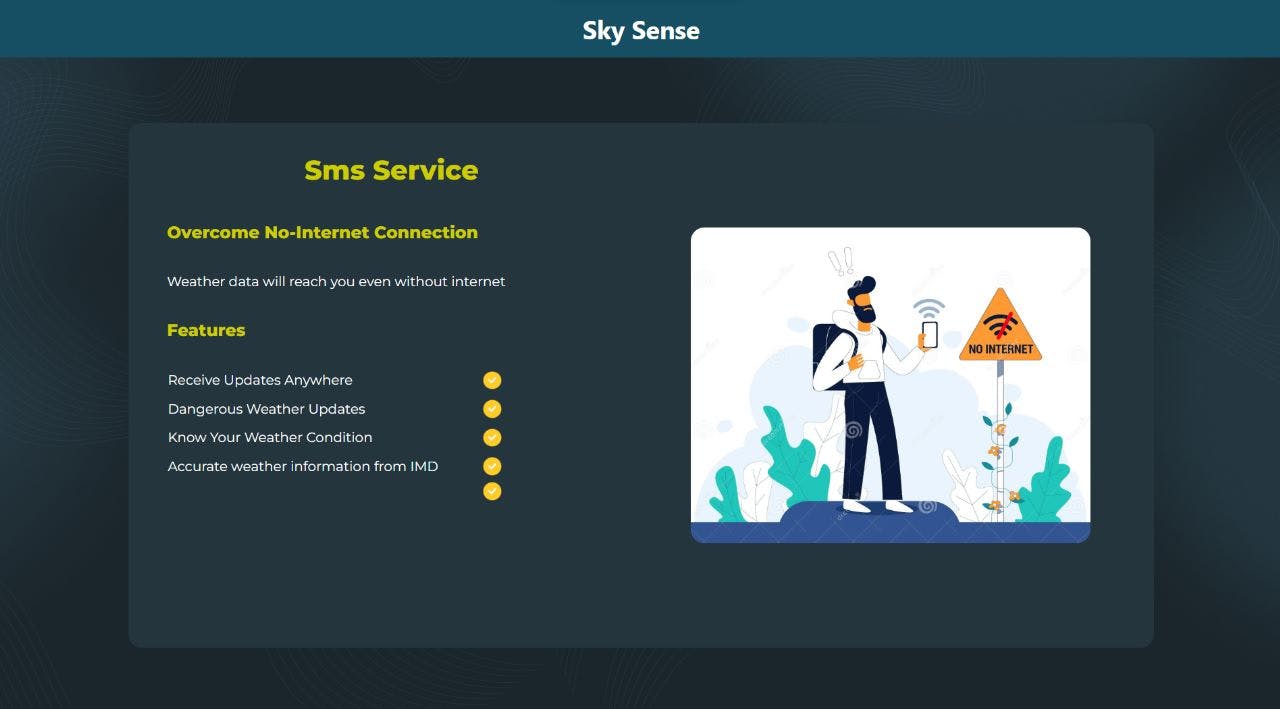
Stage 3: (final stage):

We approached Dr. S. Balachandran, Scientist 'G' and Deputy Director General of Meteorology at the Regional Meteorological Center Chennai, with our idea and received valuable inputs:
He advised us not to focus on weather prediction since IMD itself provides accurate forecasts after extensive weather analysis.
He highlighted the gap in disseminating information to the public and raising awareness of alerts, appreciating our idea for Skysense as a potential solution to bridge this gap.
We reached out to Mr. Sankarnath, Scientist at IMD, to request API access. Fortunately, he responded positively, and we have agreed to conduct further research and publish a research paper on this project within the next 5 months, as he has agreed to provide us with data access.
We are also placing emphasis on broadcasting updates to people in remote areas through radios, and we are currently in the planning phase of informing them through forest officials.
Skysense is considered highly trustworthy as it provides authorized weather information and forecasts sourced from the Indian Meteorological Department.
To address the broadcasting gap, we have implemented push notifications, daily updates, and personalized alerts (if applicable) for each user based on their location coordinates (latitude and longitude). This personalized approach ensures that Skysense delivers accurate information to its users.
